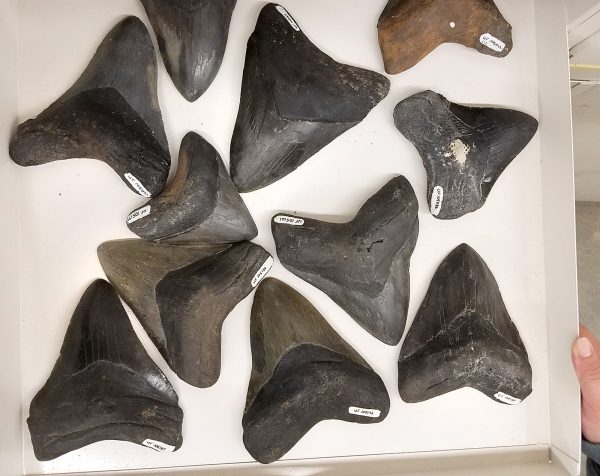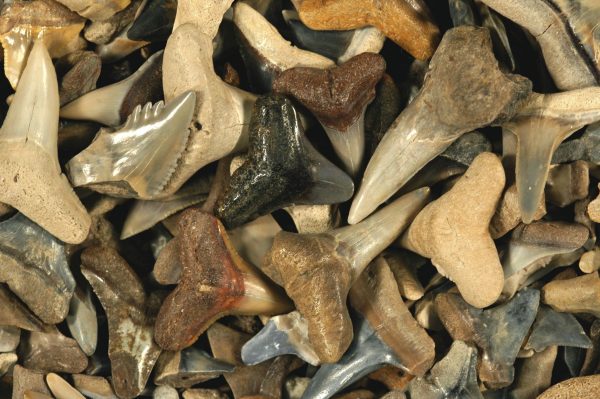Hey! Are shark teeth found in the Gainesville area technically fossils (bone replaced w stone)? I have a bet for a lunch with a buddy regarding this 🙂
— Twitter User
We get questions like this a lot. This question came by tweet. We turned to Richard Hulbert, Florida Museum’s vertebrate paleontology collection manager, for a concise answer.

Florida Museum photo by Radha Krueger
The short version: The shark teeth found in Gainesville creeks are true fossils as that term is used by paleontologists. Most are about 9-10 million years old, and there are a few places where even older specimens, from 18-20 million years old, are found in local creeks.
The long version is a little more technical: After the tooth is shed, or the animal dies and the tooth is buried in sediment at the floor of the ocean, the organic portion decays away, and some, if not all, of the space it occupied is filled with minerals.
Over hundreds to a few thousand years, the original arrangement of the atoms in the crystals changes into a more stable pattern, and during this phase, some replacement of calcium atoms by those of iron, manganese and other elements occurs.
These metallic elements cause the color change observed in most fossils from their appearance in the living animal.

Florida Museum photo by Jeff Gage
Because the thin outer layer of enamel on the crown of the tooth starts out as nearly 100% mineral, it is less altered than the root portion of the tooth, along with bone and dentin. It still has changed but mostly at the submicroscopic, or atomic level.
For this reason, the enamel portion of a fossil is often a different color than the root or dentin – or bone if the tooth is implanted in a jaw.
So we’re not sure who wins the bet. Yes, the shark teeth in the local creeks are true fossils but they have not been 100% replaced with new minerals. Only to a limited degree, and mostly at the atomic level.